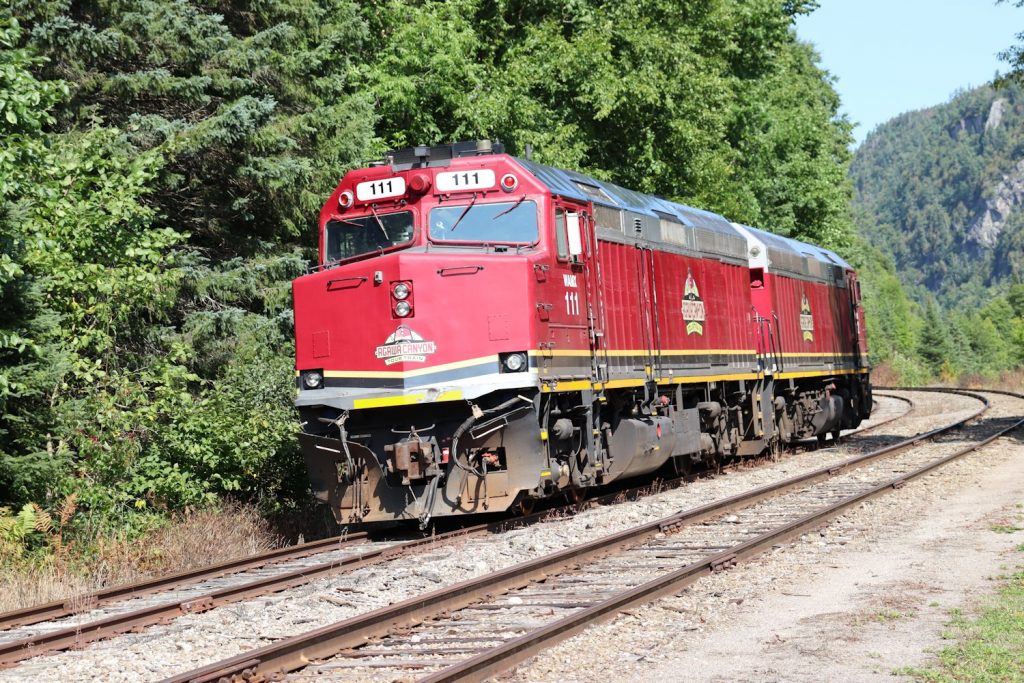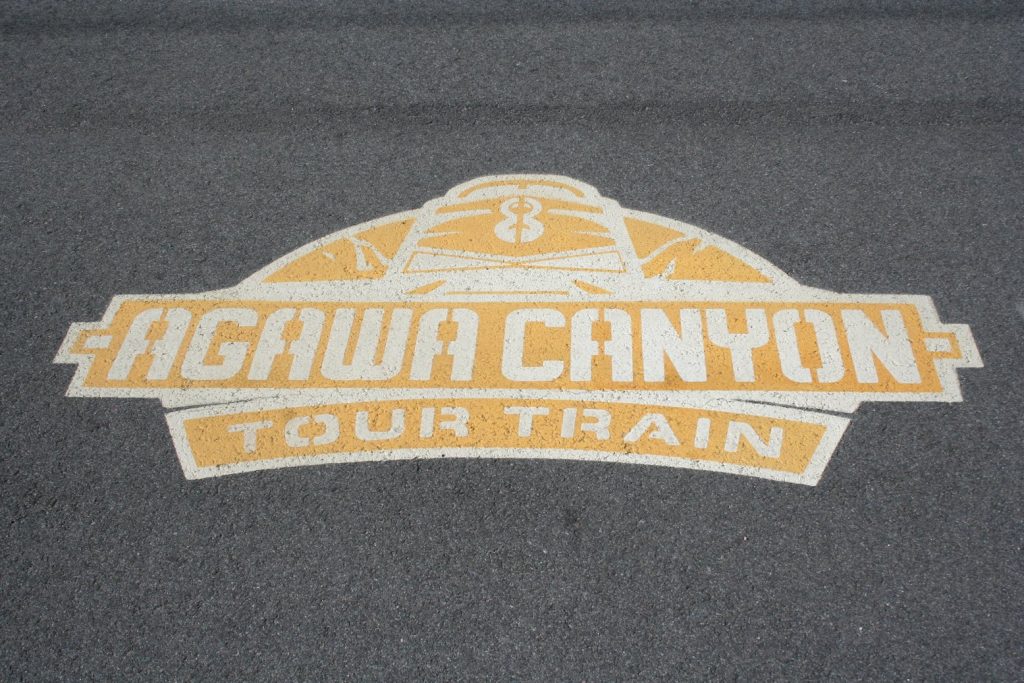
Tag Archives: Agawa Canyon Tour Train
Wordless Wednesday #111
Image
Wordless Wednesday #105
Image
A Look at the New Agawa Canyon Tour Train Station
I’m a little behind the ball in posting this, as I originally thought to post something to line up with this season’s restart of full service on the Agawa Canyon Tour Train on August 1 – which is now over a week ago. (The season will run this year to October 10.)
Following the demolition of the old paper mill buildings a few years ago – although the remaining original sandstone mill buildings were saved – the city of Sault Ste. Marie has been very busy redeveloping the old mill property into a hot little zone of community activity. Part of this re-development has included the construction of a brand new home for the Agawa Canyon Tour Train, which as of 2022 has relocated from its previous downtown station at the Station Mall to this new station at the old mill.
I passed through Sault Ste. Marie earlier in July, and while there was no tour train activity yet at that point, I was able to get a good collection of photos of the new structure.
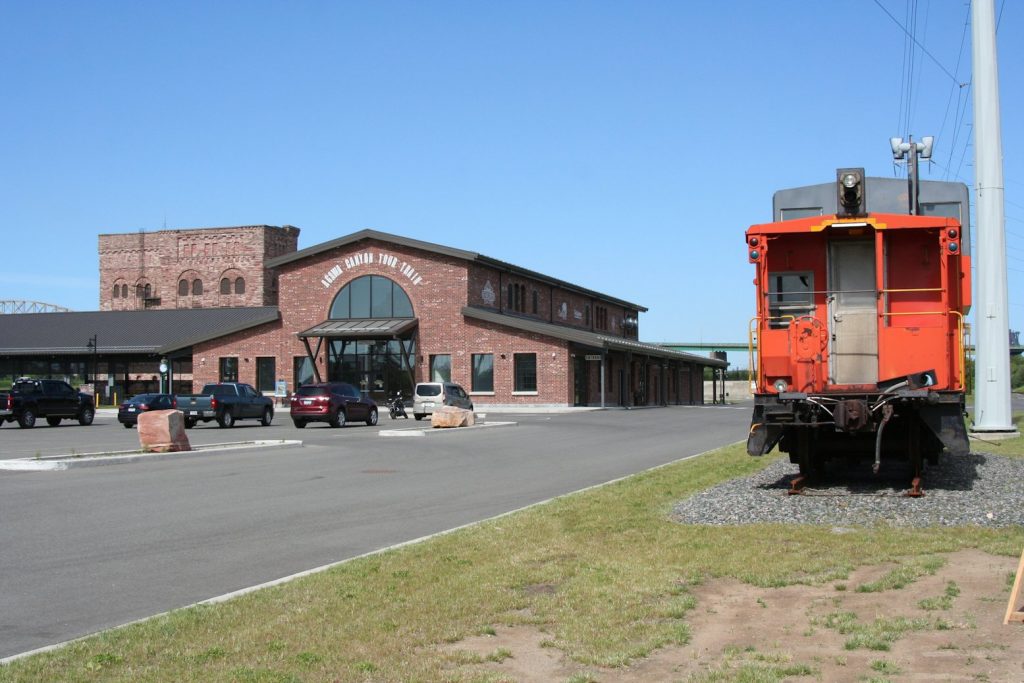
The new building contains not only the Agawa Canyon Tour Train ticket sales desk and office, but an outdoor sports outfitter’s store, a micro-brewery, and a pub restaurant.
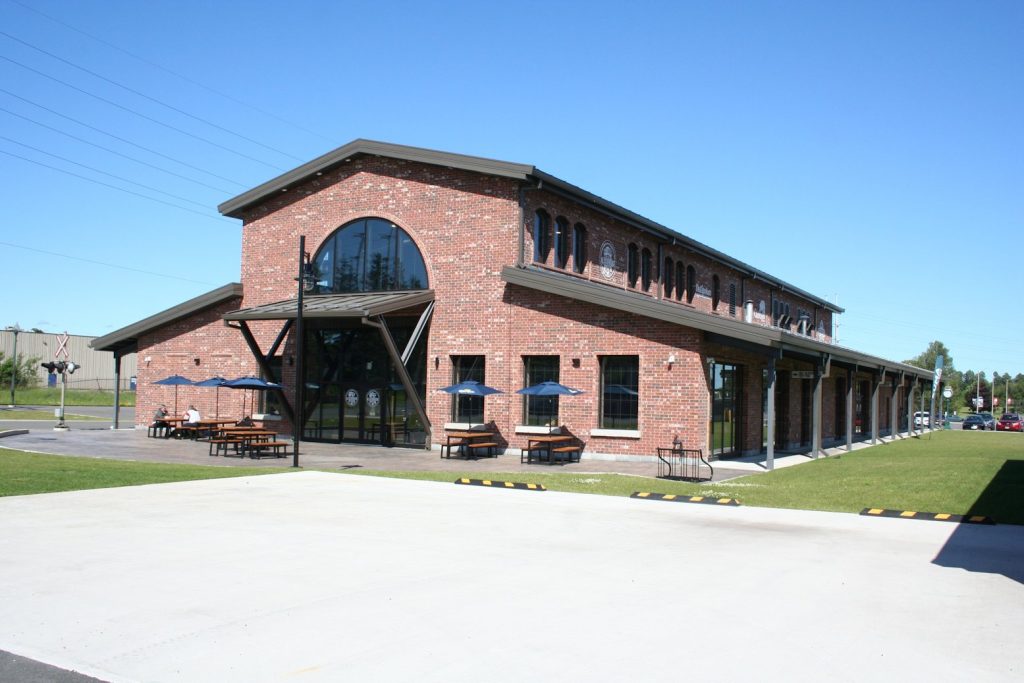
Outside of the station is a neat little display of historical railway equipment. The “wood boxcar” has been on display for a few years in the Sault as an interpretive exhibit about Canada’s “Group of Seven” artists; a well known and regarded group of artists who produced artworks of northern Ontario’s scenery, and spent a significant time traveling and living out of a converted boxcar on the Algoma Central. This particular recreation appears to have been built from the framework of the old “camp car” that used to be used on the ACR. Also preserved on display is caboose AC 9609, probably the last remaining caboose in “original” AC colours (this car was acquired secondhand in 1992 from CP).
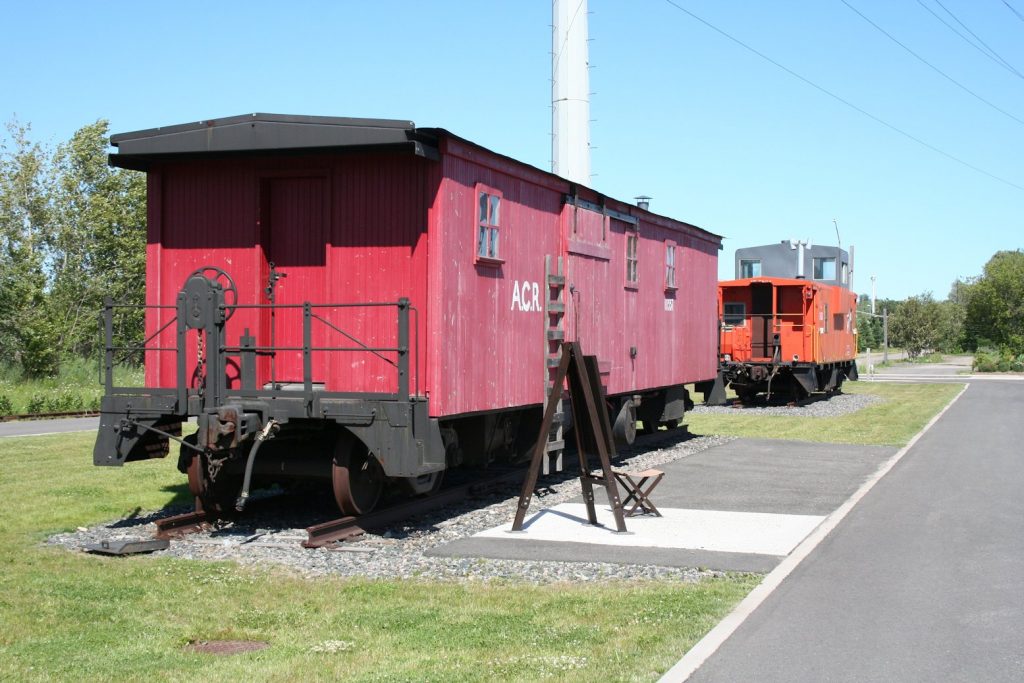
The rest of the area at this end of the old paper mill is also being nicely re-purposed. The original paper mill office building across the parking lot is now a music conservatory, and next to the old office, and also across the parking lot and grass from the new station, another original mill building has been renovated with restaurants and an arts and music venue.
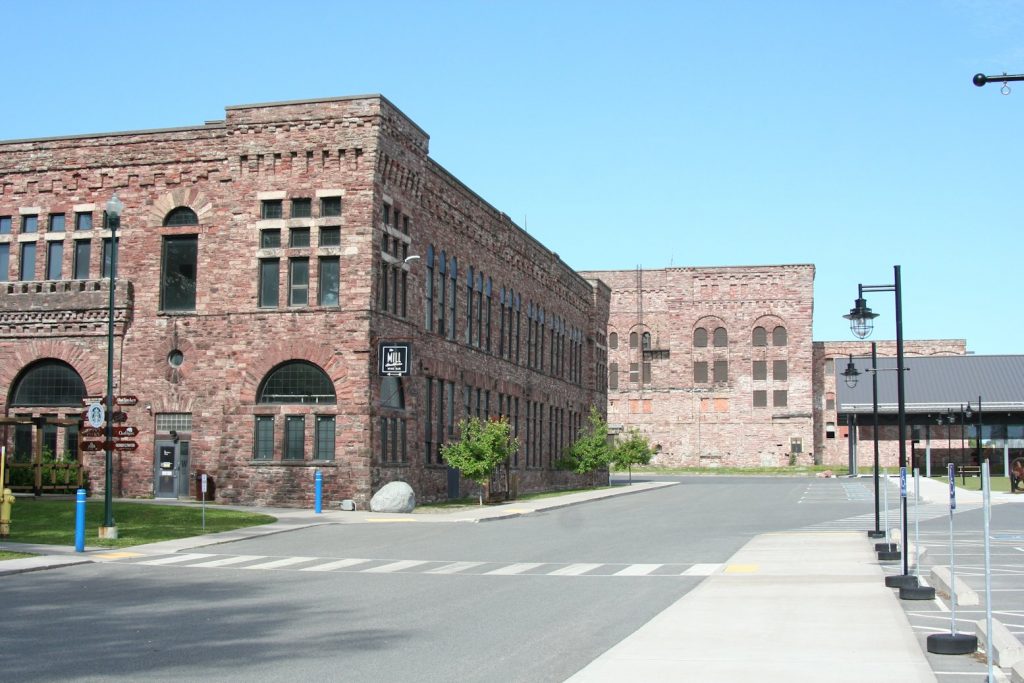
Also behind/adjacent to the new station is another new structure, an open/covered pavillion named simply “The Rink”. In this winter this structure is a covered outdoor ice rink.
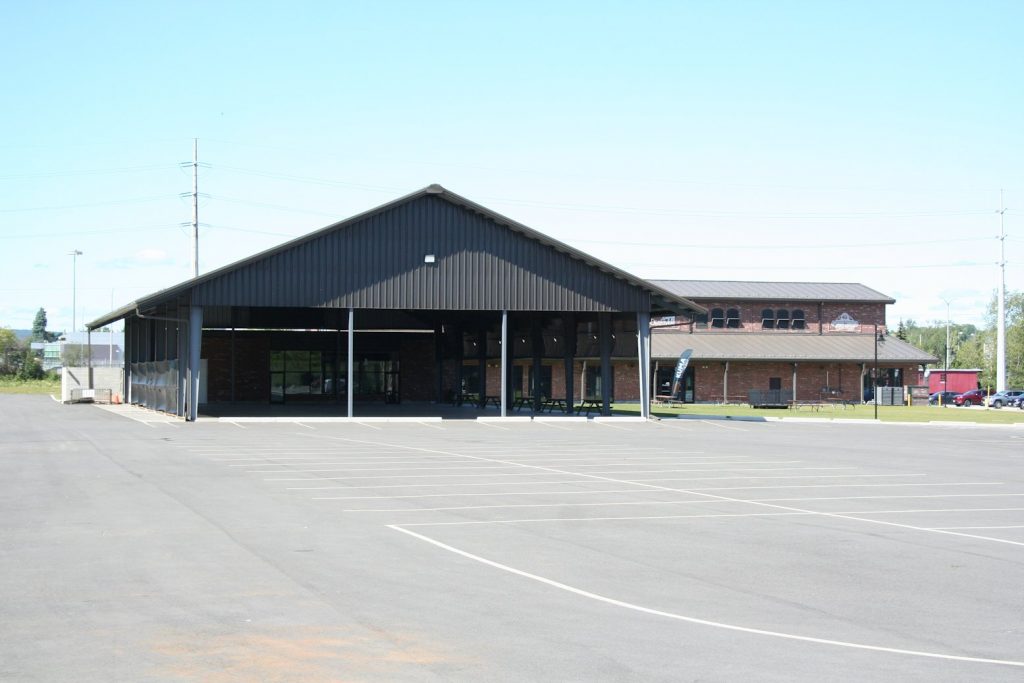
While the ticket office was not open, as it was almost a month yet before the tour train was actually running, I peeked in through the large windows, and a nice touch inside at the ticket sales desk are the name boards off an old passenger car above the desk.
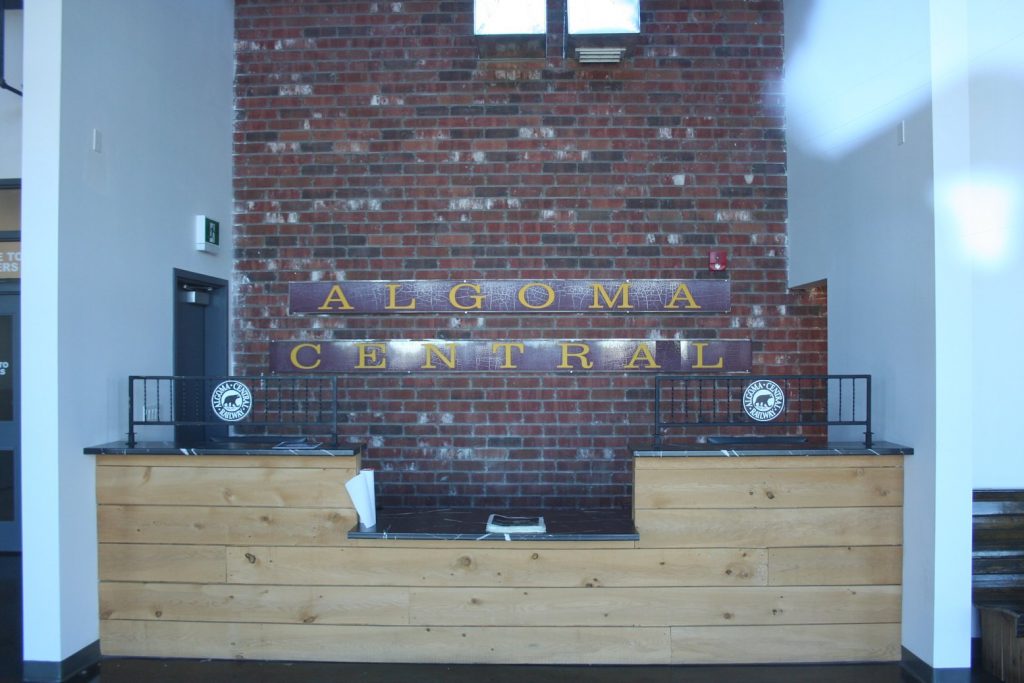
In conclusion, the Agawa Canyon Tour has a nice new home, and in general the old mill property seems to be on the way to a rather nice redevelopment.

